Mobile Flagship Phone Camera Overview 2020 H1: Still Picture Battle
by Andrei Frumusanu on June 18, 2020 11:00 AM ESTMain Cameras & HDR Processing Evaluation
We’ll be going through the various aspects of the cameras topic by topic, and a good start would be talking about the HDR implementations of the various phones and looking at how much dynamic range they’re able to squeeze out of their hardware. This will be mainly about the main camera sensors, so it’s also a good opportunity to highlight the differences here also in regards to resolution and sharpness.
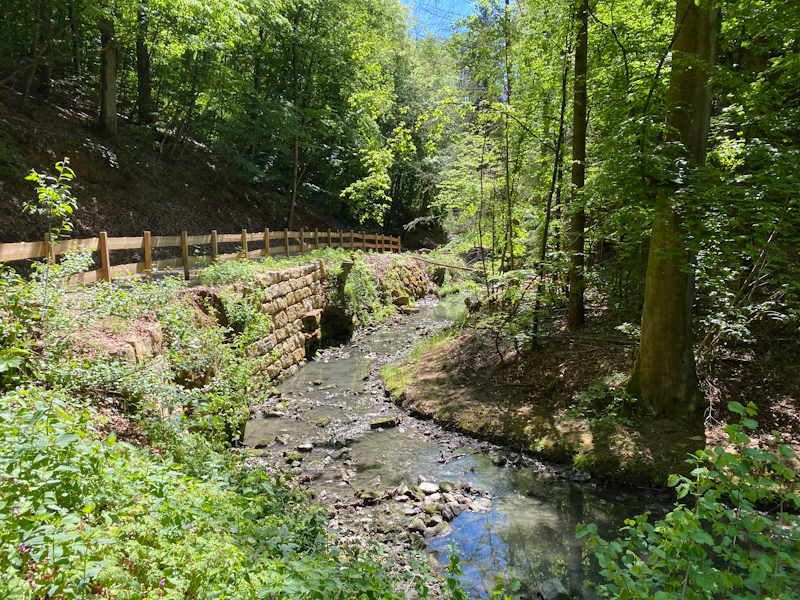
[ iPhone 11 Pro ] - [ iPhone SE ] - [ Pixel 4 ]
[ Galaxy S20U(S) ] - [ Galaxy S20+(E) ]
[ OnePlus 8 ] - [ OnePlus 8 Pro ]
[ V60 ] - [ Mi 10 Pro ]
[ Mate 30 Pro ] - [ P40 Pro ]
[ Reno3 Pro 5G ] - [ Reno3 Pro ]
[ X-T30 ]
This first scene down by a creek in the forest is probably the most challenging shot as the contrast between the dark and sunlit areas is extremely large, requiring the phones to capture as much dynamic range as possible and to process it correctly.
Apple does a great job at balancing the composition between the iPhone 11 Pro and the new iPhone SE. The latter does lack in dynamic range towards the shadows but that’s natural given the older sensor. The exposure is extremely good with a wide dynamic range, although the highlights are a bit too bright, something most phones will struggle with here.
Google’s Pixel 4 does a bit worse in terms of dynamic range with both darker shadows and brighter highlights. The main problem for me here was the phone’s colour temperature which was too warm and off-mark.
Samsung’s S20 Ultra and S20+ both failed spectacularly here in the processing as we’re seeing crushed shadows and blown highlights. It’s this kind of shot that I feel the S10 series wouldn’t have had such big issues and marks a change in the company’s processing. In the high-resolution 108MP images, the S20 Ultra does even worse with further degraded shadows, while the 64MP module of the S20+ actually fares significantly better here, with better dynamic range and colours.
OnePlus’ 8 and 8 Pro have excellent HDR algorithms here and are able to give an overall good exposure for the whole scene, but we see dark shadows either being clipped or too emphasised. It’s very easy to see the 8 Pro’s dynamic range advantage over the 8 as the phone’s newer bigger sensor just has that much more information per pixel to work with.
LG’s V60 does an excellent job in the shadows and there’s very little to reproach the phone for in terms of composition, even if the highlights are again a little bit bright. If we look at the 64MP picture then it’s a perfect example of how much of the dynamic range can be recovered thanks to the sensor’s 4:1 binning of pixels and on-chip HDR processing.
Xiaomi’s Mi 10 Pro does OK but lacks in dynamic range in the shadows. Between the 27MP and 108MP mode images the obvious difference is again in the shadows that suffer in the high-res mode.
Huawei’s devices are middle of the road in terms of the HDR. I feel like there’s a lack of saturation on the P40 Pro, generally an issue with Huawei’s phones when you’re not in AI mode to artificially apply an excessive filter.
OPPO’s Reno3 Pro phones couldn’t be more different from each other. The Qualcomm 5G variant with the Snapdragon 765 generally is again overexposed in the highlights, but the MediaTek variant has some very unique processing and is the best at actually handling the highlights of this scene while maintaining good shadows. There’s an odd grid-like pattern in the shadows though, and in genera the picture is a bit too desaturated.
Overall, this was a though scene and none of the phones really were capable of a good reproduction of the scene, however the iPhones do more clearly separate themselves from the Android crowd due to better dynamic range and good colours.
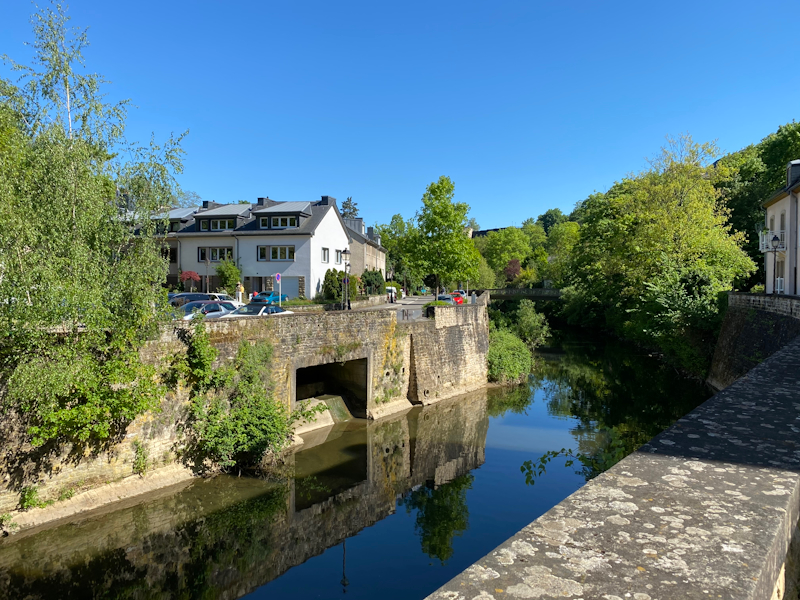
[ iPhone 11 Pro ] - [ iPhone SE ] - [ Pixel 4 ]
[ Galaxy S20U(S) ] - [ Galaxy S20+(E) ]
[ OnePlus 8 ] - [ OnePlus 8 Pro ]
[ V60 ] - [ Mi 10 Pro ]
[ Mate 30 Pro ] - [ P40 Pro ]
[ Reno3 Pro 5G ] - [ Reno3 Pro ]
[ X-T30 ]
We move on from that challenging scene to something still very dynamic, but let’s have a little more focus on colours.
Apple’s colour rendition here on the iPhones is excellent, and we do see the SE’s warmer colour temperature typical of older iPhone cameras to pop up again. Google’s Pixel 4 also does even a bit better with the colours but the shadows are a bit too dark and losing out in this part of the dynamic range.
Samsung’s results are good but they’re leaning for a tad higher exposure which seems to flatten out some textures such as the brick wall a bit too much. What’s odd there is that the S20+ clearly has the better picture compared to the S20U as it has a better dynamic range. As a reminder, it’s the Snapdragon S20 Ultra versus the Exynos S20+. The colours are generally a bit warm.
OnePlus’ colours are ok, however the HDR tonal mapping in this shot isn’t. The processing is flattening all the highlight tones into the same levels and it’s making a lot of the vegetation lose out in depth. Xiaomi also has a similar characteristic in that some of the highlights seem to have been processed down
The LG V60 here did really well and it’s the closest phone to match the Fuji camera in terms of exposures and tone curves.
On the Huawei phones the Mate 30 pro opted for a darker exposure which I guess is fine, but this does end up with a lot of clipped shadows. The P40 Pro has a more realistic exposure and in this regard it does really well but again the colours without the AI processing just seem a tad desaturated.
On the OPPO phones the Qualcomm Reno3 Pro has much better colours, however the MediaTek variant clearly has much better dynamic range handling, which unfortunately ends up with a lack of colour depth and desaturated colours.
Overall, I think LG’s V60 did the best job in terms of the colour renditions. It’s something they had greatly improved last year with the G8 and again did very well in this generation.
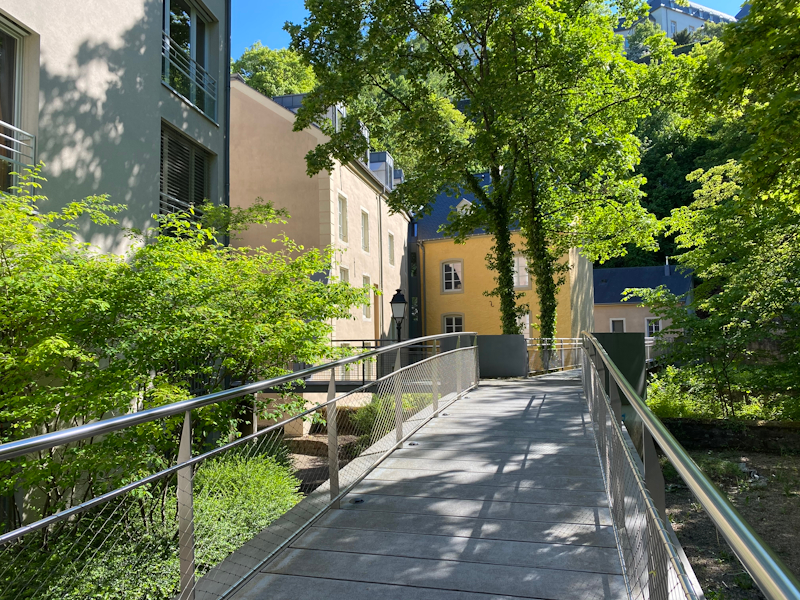
[ iPhone 11 Pro ] - [ iPhone SE ] - [ Pixel 4 ]
[ Galaxy S20U(S) ] - [ Galaxy S20+(E) ]
[ OnePlus 8 ] - [ OnePlus 8 Pro ]
[ V60 ] - [ Mi 10 Pro ]
[ Mate 30 Pro ] - [ P40 Pro ]
[ Reno3 Pro 5G ] - [ Reno3 Pro ]
[ X-T30 ]
The next scene also is sensible to the HDR processing, but we’ll also try to pay a bit more attention to detail that the main cameras can achieve.
Apple has excellent results on both the 11 Pro and the SE, however the 11 Pro’s newer sensor or camera calibration is able to give colours a little more depth and saturation. Google’s Pixel 4 has a very similar picture, albeit a bit warmer and less shadow detail, and loses out to the iPhone in terms of detail and sharpness in the majority of the picture.
Samsung’s S20 Ultra does excellently in terms of sharpness in its 12MP picture – it seems they had toned down the over sharpening that we initially covered in our review of the phones. The S20+ is about on par with the iPhone 11 Pro in the sharpness.
In the 108MP and 64MP modes of the phones the S20 Ultra does get higher amounts of detail, but it’s also significantly noisier than the S20+. The S20+ also has a better dynamic range with its 64MP sensor.
The OnePlus 8 phones are very different in the composition here. The regular 8 really tones down the highlights too much and this makes the image look too flat, especially in the sunlit elements. The 8 Pro has this habit of darkening dark shadows to near black which I’m pretty sure is a purposeful processing choice by OnePlus which they had made last year in trying to copy Google’s limited dynamic range in the Pixel 3. Detail-wise, the 8 Pro is the clear winner here and on par with the iPhone and S20+.
In the 48MP modes of the phones, the regular 8 came out really soft, I hope the camera actually focused correctly here. On the 8 Pro it’s a lot sharper but doesn’t match up the S20’s.
If you look at the middle-right at the fence between the two tree trunks you’ll see some interesting behaviour of the camera sensor: it has issues with properly demosaicing the quad-Bayer colour filter correctly and it results in squiggly lines instead of the straight grid pattern of the fence.
The LG V60 here has an excellent overall composition and really is only characterised by that overblown building façade. It’s actually something I had to bring down on the Fuji as well but I prefer this to be maintained on the phone as otherwise we end up with too flat highlights in the remainder of the scene. LG has a natural advantage due to capturing pictures at a default 16MP rather than most other 12MP phones and this directly translates into more detail. The 64MP mode is excellent and easily outperforms both S20 phones in effective resolution.
The Xiaomi Mi 10 Pro in theory should be the highest resolution phone here as its main sensor is native at 27MP in terms of chroma resolution, but this doesn’t directly translate as I think the optics aren’t holding up as well as one would think. Still it is better than the 12/16MP shooters. In 108MP mode it’s about on par with the S20 Ultra but suffers from worse micro-contrast which again I think is due to optics.
Huawei’s results are a bit odd as I would say the P40 is less sharp than the Mate 30. The newer phone crops to 27mm focal length from 23mm, and then stretches out the image to fill in the 12MP resolution again, which to me seems like a pointless thing to do. In the high-res 50MP mode the P40 Pro regains its native field-of-view. Details here are OK but not holding up to the resolution and isn’t able to hold up to other phones.
Notice in the same spot on the fence between the two trees again the squiggly lines, almost identical to the ones on the OnePlus 8 Pro – an artefact of Sony’s quad-Bayer image sensor demosaicing.
On OPPO’s phones the MediaTek regular Reno3 Pro is the clear winner thanks to the higher resolution sensor. Colour differences aside, it’s just a bigger sensor that is able to capture more. The 64MP pictures here I don’t think are actually 64MP but 16MP blown up – maybe the phone doesn’t actually capture native high res in demanding dynamic range scenarios.
Overall, the V60 was very impressive in terms of its detail retention and the champ when it comes to resolution thanks to its 16MP standard capture mode. The Mi 10 should have won this but the phone is seemingly handicapped by the optics.
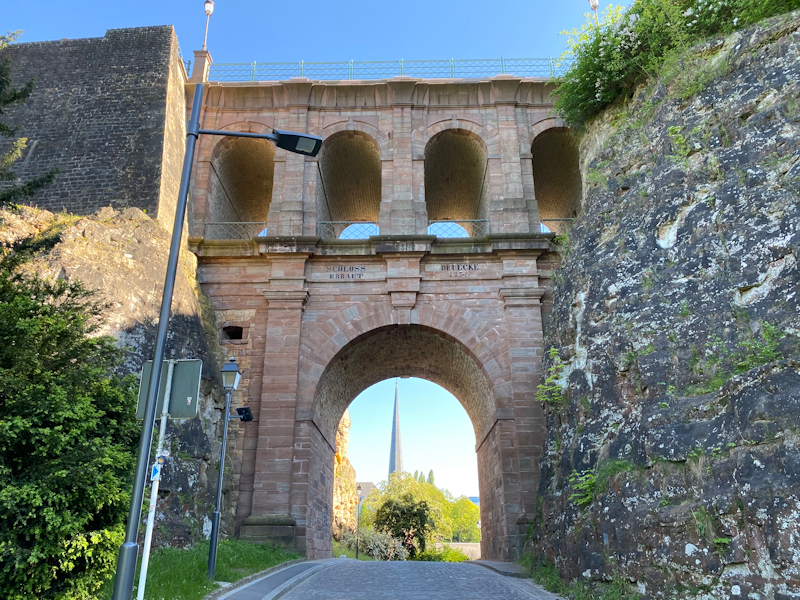
[ iPhone 11 Pro ] - [ iPhone SE ] - [ Pixel 4 ]
[ Galaxy S20U(S) ] - [ Galaxy S20+(E) ]
[ OnePlus 8 ] - [ OnePlus 8 Pro ]
[ V60 ] - [ Mi 10 Pro ]
[ Mate 30 Pro ] - [ P40 Pro ]
[ Reno3 Pro 5G ] - [ Reno3 Pro ]
[ X-T30 ]
Quickly going over the results of this shot, I feel like a ton of phones had problems with exposure composition and colour balance as the scene confused the algorithms. Apple, LG, Xiaomi and OPPO were far too warm. Samsung did ok, OnePlus and Huawei did better with the colours although both the OP8’s and the P40 Pro feel like they’ve added artificial contrast to the scene (particularly the right rock face).
The discrepancies here between the vendors is really big and frankly shocked me as I didn’t expect such results in modern phones. If I had to pick a favourite it would go with the OnePlus 8 Pro here.
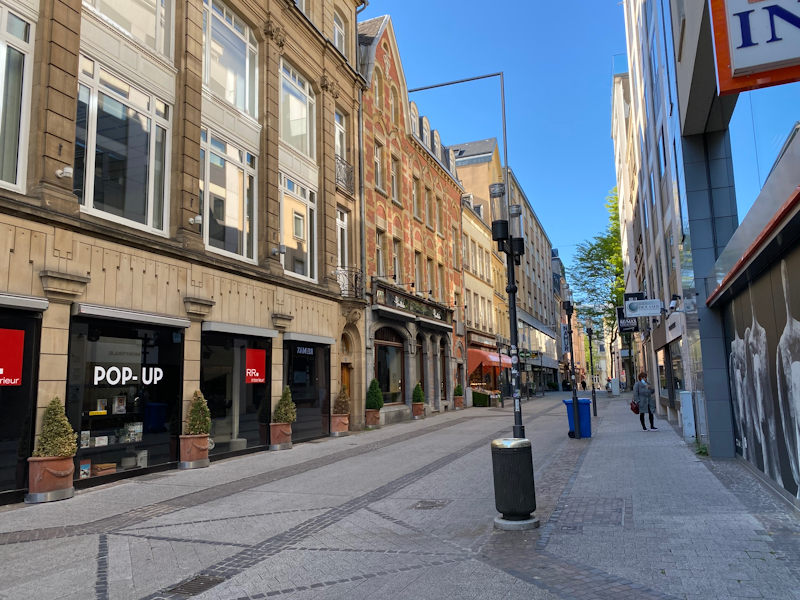
[ iPhone 11 Pro ] - [ iPhone SE ] - [ Pixel 4 ]
[ Galaxy S20U(S) ] - [ Galaxy S20+(E) ]
[ OnePlus 8 ] - [ OnePlus 8 Pro ]
[ V60 ] - [ Mi 10 Pro ]
[ Mate 30 Pro ] - [ P40 Pro ]
[ Reno3 Pro 5G ] - [ Reno3 Pro ]
[ X-T30 ]
In less challenging lighting conditions, the phones also need to step up and deliver good colours, exposures and details. This early evening in the city has very little in terms of bright elements or highlights so it should be easier for the phones to get to something comparable.
A lot of the phones again have trouble aiming for a good colour temperature but the cooler OP8Pro and the P40 Pro were closest to the target. In terms of exposure and dynamic range the iPhone 11 Pro, S20+ and Pixel 4 had the best results. The OP8Pro also has some fantastic result but I can’t get over those artificially blackened shadows, it gives it a very nice contrasty look but it’s not realistic, things aren’t painted in vantablack to appear like that in daylight.
In terms of high-resolution capture modes, I would again give it to the LG V60 as having the most detailed shots, followed by the S20+.
Overall Main Camera
Overall, the first impression in terms of the various camera sensor technologies is that you don’t necessarily need a super high-res sensor to compete, although it does help. Apple’s iPhone 11 Pro consistently did amongst the most balanced shots of all the phones thanks to great processing. It’s not always exactly on point with colour temperature but it does manage to get it right more often than the other vendors. The Pixel 4’s camera system just fees a bit outdated and the pictures are very much outmatched by either the iPhone or another Android competitor.
Samsung’s processing in the majority of the time is very good, but sometimes has its oddities in terms of colour. The S20+ consistently outperformed the S20 Ultra in these tests, I don’t know if that’s a camera setup or a chipset difference here as I didn’t bring the Exynos S20 Ultra for testing this time around. In general, the 108MP sensors on both the S20 Ultra and the Mi 10 Pro were a bit disappointing as they showcased worse results both in dynamic range and detail compared to other phones.
LG’s V60 was surprisingly good and in some scenes amongst the best in terms of colour and exposure composition. It’s also the phone that’s the sharpest on the main camera, both in it’s 16MP default mode and 64MP high-res mode.
Huawei never had a strong point in daylight photography and even the P40 Pro again doesn’t resolve some of its issues, with the Mate 30 pro sometimes having better processing. The 50MP sensor also doesn’t convince too much, both because of the weird 23mm to 27mm cropping and subsequent image stretching to 12.6MP.
The OnePlus 8 Pro’s main camera is pretty fantastic and more often than not will be amongst the top performers. Only minus point is its purposefully contrast look that tends to clip shadows to black.










130 Comments
View All Comments
skavi - Thursday, June 18, 2020 - link
holy shit, this is amazing. The reference camera is such a great idea. Thanks for putting this together; it must have taken forever.beginner99 - Friday, June 19, 2020 - link
Yeah the reference camera, which isn't even a very special one, shows just how pathetic these phone camera are. I have a 10 year old canon slr. I don't even know megapixels but we all know they don't really matter that much. sensor size and optics is far more important. Yeah it's an unfair comparison but the difference is such gigantic were the 10 year old slr is just so much better.BedfordTim - Friday, June 19, 2020 - link
Even expensive lenses are down to about 50% contrast at 3.5um which explains why the phone pictures are either lacking in detail or artificially sharpened when you look closely.Still as they say, the best camera is the one you have with you.
ergo98 - Friday, June 19, 2020 - link
This is quite a hot take.Firstly, the reference camera is a brand new model of a $900 USD camera It is certainly a WORLD better than your old Canon SLR. Even over the past 3 years, Nikon and Fuji had made huge strides in the quality of their sensors.
Speaking of which, the iPhone 11 is certainly a lot better than your Canon as well. I have a number of SLRs, including Nikons and Canons, and until recently Canons had horrendous dynamic range (most Canons just a few years old had 6 stops of DR. The iPhone 11 has 11 stops, which coincidentally bests a number of current model SLRs).
Secondly, saying that the reference shows "how pathetic" phone cameras are is bizarre if you've actually looked at the pictures. There are a number where it would be hard pressed to say what camera was "special", and a number where I'd hardly call the Fujis picture the winner.
s.yu - Saturday, June 20, 2020 - link
Fuji's sensors are certainly not known for performance, especially DR. Then again Canon's neither, but 10 years ago that would probably have been FF, so that somewhat bridges the gap.Andrei Frumusanu - Sunday, June 21, 2020 - link
Huh? Fuji's sensors are best in class. It's competing with FF sensors, just 1 stop short of the best; https://www.photonstophotos.net/Charts/PDR.htms.yu - Monday, June 22, 2020 - link
Well, for years photographers have used PS and LR to develop Fuji files and reached the opposite conclusion, and determined that Fuji's main advantage is their JPG filters. There was also discussion about "fake ISO" in which Fuji's ISO numbers are artificially boosted by about half or was it 2/3rds of a stop, I don't know how this particular measurement is influenced by those factors. Also, if you look at base ISO, Fuji's XT-3 has 2/3 stop less DR than the equivalent Sony (A6600) because its base ISO is higher.Andrei Frumusanu - Monday, June 22, 2020 - link
The latest sensor is barely one and a half years old so it doesn't really matter whats years long discussions say. Capture One also has much better handling of the raw files than the Adobe apps which might be related to what you're reading.There's also a noise vs ISO measurements; https://www.photonstophotos.net/Charts/RN_ADU.htm
The Fuji is ahead of the A6600 save for 400-600 where the dual gain kicks in later for the Fuji.
s.yu - Wednesday, June 24, 2020 - link
That's suggesting that Fuji had reason to stop inflating those numbers, but nothing points to that otherwise.There's another way to read into this, the XE1, which was often accused of inflating ISO, had a stop lower DR at base, according to that site, than an old Sony, the a6000, while this exact difference is maintained between a6600 and XT3. In the mean time, Fuji's pipeline has apparently stayed the same and continues to use Sony sensors.
With nearly a stop less base ISO to work with it's handicapped anyhow, it would make news if the Fuji at ISO200 matches Sony's DR at ISO100. I don't even know why you're trying to refute this.
s.yu - Monday, June 22, 2020 - link
Or actually, if you look at it the other way, that they both actually start at ISO100, but Fuji's ISO number on the chart was indeed inflated by 2/3rds of a stop, then everything adds up too.